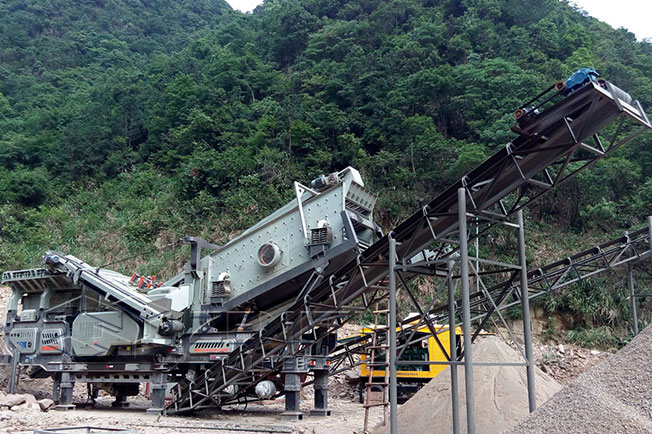The mobile vibrating screen for aggregate screening is a versatile piece of equipment used in various industries such as mining, construction, and recycling. Its primary function is to separate materials based on size, allowing for efficient processing and utilization of resources. In this article, we’ll explore the components, benefits, and applications of mobile vibrating screens for aggregate screening.

Components of Mobile Vibrating Screens:
- Screen Deck: The screen deck is the surface where the screening of materials takes place. It consists of multiple layers of mesh or perforated plates with varying opening sizes. These screens are often made from durable materials like steel to withstand the rigors of heavy-duty usage.
- Vibrating Mechanism: The vibrating mechanism is responsible for imparting vibratory motion to the screen deck. It typically comprises an eccentric shaft with counterweights that generate the necessary vibrations for efficient screening. This vibration helps in loosening and stratifying the materials on the screen deck, allowing for effective separation.
- Drive Unit: The drive unit provides the power necessary to operate the vibrating mechanism. It can be powered by electricity or diesel engines, depending on the mobility requirements of the equipment. Some mobile vibrating screens also feature hydraulic drive systems for added versatility.
- Support Structure: The support structure holds all the components together and provides stability during operation. It is designed to withstand the dynamic forces generated by the vibrating screen and ensures proper alignment for optimal performance.
Benefits of Mobile Vibrating Screens:
- Portability: One of the key advantages of mobile vibrating screens is their portability. They can be easily transported to different job sites, allowing for on-site screening of aggregates without the need for fixed infrastructure. This flexibility enhances productivity and reduces downtime associated with material transportation.
- Versatility: Mobile vibrating screens are highly versatile and can handle a wide range of materials, including aggregates, ores, sand, gravel, and recyclables. They can be equipped with different types of screen decks and accessories to accommodate specific screening requirements.
- Efficiency: By effectively separating materials based on size, mobile vibrating screens improve the efficiency of downstream processes such as crushing, grinding, and sorting. They help in maximizing the yield of usable materials while minimizing waste and reprocessing costs.
- Cost-Effectiveness: Compared to stationary screening equipment, mobile vibrating screens offer a cost-effective solution, especially for short-term projects or operations in remote locations. They eliminate the need for expensive infrastructure investments and provide a quick return on investment.
- Environmental Benefits: Mobile vibrating screens contribute to environmental sustainability by reducing the need for material transportation, which in turn lowers carbon emissions and fuel consumption. They also facilitate on-site recycling of aggregates and other materials, promoting circular economy practices.
Applications of Mobile Vibrating Screens:
- Mining: Mobile vibrating screens are widely used in the mining industry for screening various types of ores and minerals, including coal, iron ore, gold, and copper. They help in efficiently separating valuable minerals from gangue materials.
- Construction: In the construction industry, mobile vibrating screens are used for screening aggregates such as sand, gravel, and crushed stone. They are essential for producing high-quality construction materials for building roads, bridges, and infrastructure projects.
- Recycling: Mobile vibrating screens play a crucial role in the recycling industry by separating recyclable materials such as glass, plastic, and metal from waste streams. They enable recyclers to recover valuable resources and minimize the amount of waste sent to landfills.
- Quarrying: Quarry operators utilize mobile vibrating screens to screen and classify various sizes of rocks and aggregates extracted from quarries. This helps in optimizing the production process and meeting the specifications of end-users in the construction and infrastructure sectors.
Mobile vibrating screens for aggregate screening offer numerous benefits in terms of portability, versatility, efficiency, cost-effectiveness, and environmental sustainability. They are indispensable equipment in industries such as mining, construction, recycling, and quarrying, where efficient material screening is essential for success.
